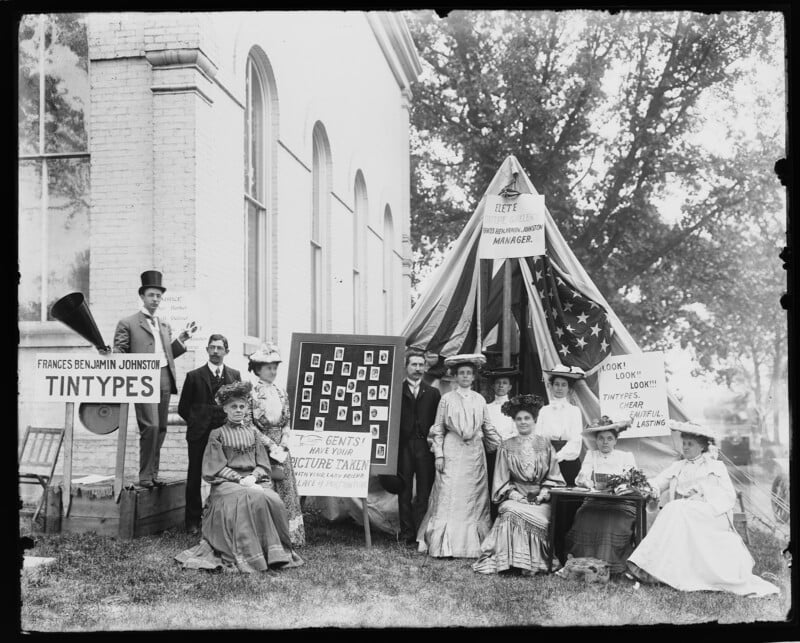The Fascinating History of Tintype Photography

Long before film rolls and megapixels, photographs were made using metal plates covered in photosensitive chemicals. One of the most iconic and influential of these early photo technologies are tintypes.
As a recent blog post at the Library of Congress explains, tintypes are a variation of the wet collodion process, which was pioneered by Frederick Scott Archer in 1851. Archer never patented his process, which enabled tintypes to become extremely widespread but didn’t provide him with any financial security. Unfortunately, he died impoverished, though his contribution significantly advanced photography.

The process of creating tintypes begins with coating a thin piece of dark or lacquered metal, commonly iron, with a light-sensitive liquid. Once the image is captured, it is finished off with a varnish to protect it from oxidation and maintain its stability. These images were often housed in albums or paper sleeves, which served as a means to record important details such as the location, subjects, and date. The paper mat also allowed tintypes to become excellent souvenirs, with vendors crafting branded paper mats.

Tintypes had a few advantages over other image-making processes of the time, which is what made them so popular. First, tintypes result in a positive image, though with a reversed image. Second, the tintype method allowed photographers to make images in a matter of minutes, much more efficient than previous photography methods.
The faster exposure time was especially beneficial for portraits, as subjects didn’t have to hold still for nearly as long. All of these factors meant that prints could quickly be handed off to patrons, which is part of what made them a suitable choice for carnivals, fairs, and tourist locations even after the method’s popularity waned among dedicated photography studios after the 1860s.

Despite immense advances in photography, tintype photography continues to thrive even today in the hands of passionate and innovative photographers. These days, photographers typically use aluminum plates instead of iron, though the rest of the traditional process remains much the same. Photographers continue to push the boundaries of this method, with one even capturing a tintype via a drone. Others have built their businesses around this historic analog method, proving that tintype photography is not just a relic of the past.





